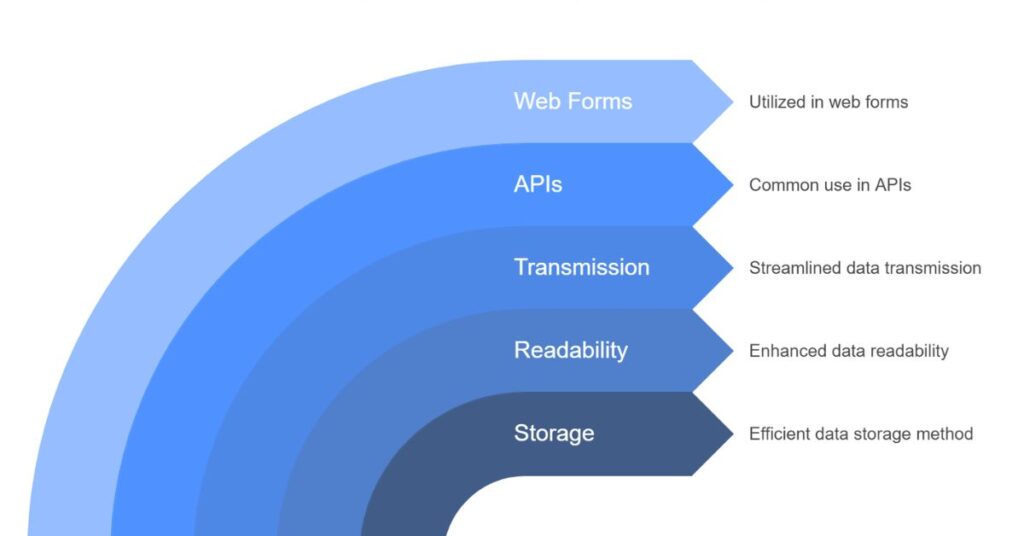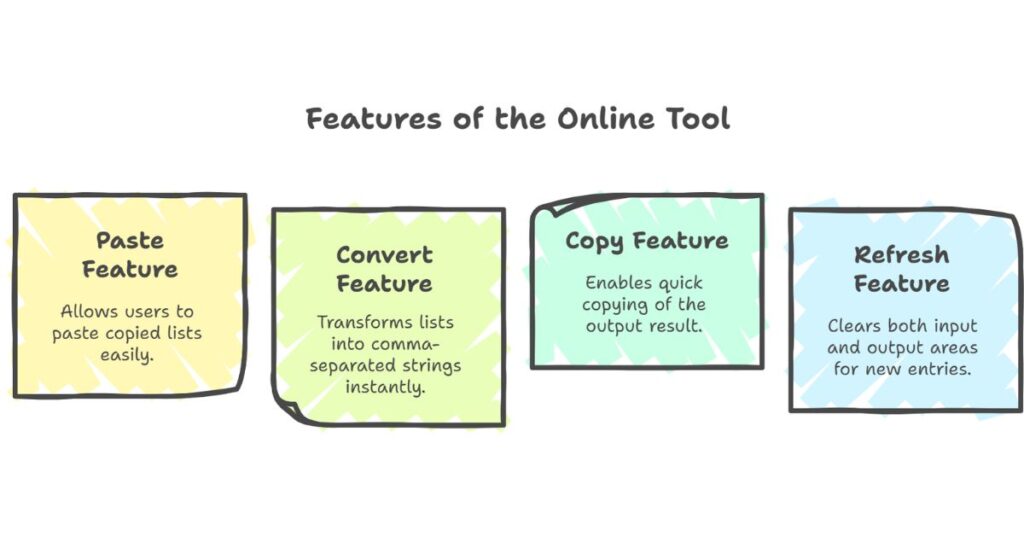Convert List to Comma Separated String Online
Table of Contents
As a CSE engineer working in the IT sector, I often deal with large amounts of data. One common task is converting a list into a comma-separated string. This simple process is useful in many programming and database operations. It saves time and helps improve productivity.
In this article, I will explain how to convert a list into a comma-separated string online using a clean and clear method.
Why You Need to Convert a List to a Comma-Separated String
Data comes in many formats. Sometimes you get a list of items, each on a new line. But you may need that list in a single line, separated by commas. This format is common in CSV files, JavaScript arrays, and database fields.

A comma-separated string is easier to store, read, and send. It works well in APIs, web forms, and code. Instead of writing each value by hand, you can use a tool to do this job quickly.
Common Uses of Comma-Separated Strings
#1 CSV File Creation
CSV stands for comma-separated values. It is a standard format to save and exchange tabular data. Each line is a row, and each value in that row is separated by a comma. You can use this format in Excel, Google Sheets, and many other tools.
#2 Form Data Processing
Online forms often collect multiple values. If you receive a list of values, you may want to convert them to a comma-separated format to process them easily or send them to a server.
#3 JavaScript and Other Programming Languages
In JavaScript, arrays often use comma-separated values. Instead of writing ["apple", "banana", "cherry"], you can paste a list and convert it to this format instantly.
How to Convert a List to a Comma-Separated String Online
You can convert a list manually, but that takes time. A better way is to use a simple online tool. Here’s how the process works step by step:
Step 1: Paste Your List
Open the tool and paste your list in the input box. Each item should be on a new line. For example:
apple
banana
cherry
Step 2: Click the Convert Button
Click the Convert button. The tool will process your input and turn it into a single line:
apple, banana, cherry
Step 3: Copy the Output
Click the Copy button to copy the result. You can paste it into your code, Excel sheet, or anywhere else.
Step 4: Use Refresh or Paste Options
Click Refresh to clear the input and output boxes. Use the Paste button to paste content directly from your clipboard if needed.
Features of the Online Tool

The tool is fast and easy to use. It includes the following features:
- Paste from Clipboard: One click to paste your copied list.
- Convert Button: Instantly turns the list into a comma-separated string.
- Copy Button: Quickly copies the output.
- Refresh Button: Clears the input and output areas.
The interface is clean and mobile-friendly. It supports long lists and removes extra spaces or blank lines automatically.
Benefits for Developers and Data Users
Simple Workflow
You don’t need to install any software. You just open the tool, paste your list, and click convert. It takes a few seconds.
Time-Saving
Manual conversion wastes time. This tool does the job in one click, which saves effort and speeds up your work.
Reliable Output
The tool removes blank lines, trims extra spaces, and ensures the output is clean. This makes it reliable for use in code and databases.
Final Thoughts
If you want to convert a list to a comma-separated string online, use a simple tool with clear buttons and fast processing. This saves time and helps you work smarter. Whether you work with CSV files, forms, or programming code, this tool can speed up your workflow and reduce manual errors.
Use the Convert, Copy, Paste, and Refresh buttons to manage your list easily. The tool is free, user-friendly, and works well for both small and large lists.
Keep your workflow clean and efficient. Use the right tool for simple tasks. It will improve your overall productivity.